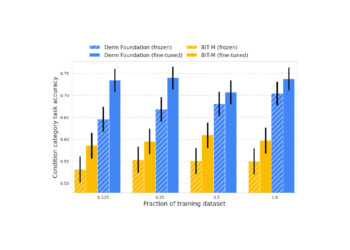Let’s talk about Non-Functional Requirements (NFRs) — an often overlooked but absolutely vital component of system design.
As a solutions architect, one of the most critical aspects of designing resilient and efficient systems is understanding the significance of NFRs. While Functional Requirements (FRs) answer the what — “What should the system do?” — NFRs define the how — “How should the system operate?” This distinction is key to ensuring that your solutions are not just functional, but also scalable, secure, and reliable.
In real-life scenarios, I’ve often witnessed the consequences of NFRs being treated as an afterthought. When teams are under pressure to meet tight deadlines or budgets, there’s a tendency to prioritize delivering functionality over addressing operational requirements.
This approach might work in the short term, but in the long run, it’s a recipe for disaster. Systems that are functionally complete but lack scalability, security, or reliability will fail under real-world conditions. Whether it’s a platform crashing during high traffic or security vulnerabilities exposing sensitive data, ignoring NFRs leads to costly consequences.
One crucial lesson I’ve learned is this: NFRs are not optional. They are integral to delivering value not only to the end user but also to the business. Striking a balance between FRs and NFRs ensures that your systems are both functional and operationally sound. While FRs define what a system can do, NFRs ensure it does so well, even under challenging circumstances.
During system design, NFRs are often deprioritized because they don’t produce visible outcomes during early development stages. For instance:
- Performance: Often ignored until the system slows down under real-world loads.
- Security: Considered a “later” priority, leaving systems vulnerable to breaches during deployment.
- Scalability: Overlooked until the system struggles to handle increased user demand.
In my experience, the pressure to deliver functionality often results in NFRs being compromised. Teams focus on the “happy path” — delivering features that work in ideal conditions — while ignoring the potential challenges the system might face in the real world. This is a risky gamble that can lead to costly rework, reputational damage, or even catastrophic failures.
Here are six NFRs that every solutions architect should prioritize:
1️⃣ Scalability 📈
Ensuring a system can handle increasing workloads seamlessly is critical. Imagine launching a platform that performs well with 1,000 users but crashes when it hits 10,000. Scalability ensures your solution grows with user demands and avoids bottlenecks during peak times.
2️⃣ Reliability ⚙️
Reliability ensures your system operates consistently without failures. Users expect uninterrupted access to services, and any downtime can lead to lost revenue or dissatisfaction. Think of reliability as your system’s ability to keep its promises.
3️⃣ Performance 🏎️
No one likes a slow system. Performance requirements focus on metrics like response times, throughput, and latency. Whether it’s a mobile app or a data pipeline, users expect speed and efficiency.
4️⃣ Availability ⏰
Availability guarantees uptime — ensuring your system is accessible when users need it. High availability (e.g., 99.9% uptime) is often non-negotiable for mission-critical applications.
5️⃣ Security 🔒
Security is about protecting your system and its data against unauthorized access, breaches, and attacks. With cyber threats on the rise, this NFR is more relevant than ever. A secure system builds user trust and safeguards sensitive information.
6️⃣ Maintainability 🔧
Systems should be easy to update, fix, and improve. Maintainability ensures that developers can add features or resolve issues without significant overhead, reducing technical debt over time.
When properly defined and implemented, NFRs drive long-term business value:
- Reduced Risks: Security, reliability, and availability minimize the risk of failures, breaches, or downtime.
- Cost Efficiency: Scalability ensures resources are used effectively, reducing unnecessary expenditures.
- Customer Satisfaction: Performance and reliability enhance user experience, driving customer loyalty.
- Agility: Maintainability enables faster updates and reduces the time to market for new features.
In essence, NFRs are not just about building better systems; they’re about building systems that align with business goals and deliver sustainable value.
Despite their importance, NFRs are often neglected during the initial stages of development because they don’t deliver immediate, visible results. Teams focus on implementing features, assuming that operational aspects like performance or security can be addressed later. However, addressing NFRs early in the design phase is far more cost-effective and less disruptive than fixing issues post-deployment.
I’ve encountered projects where overlooking NFRs had significant consequences. For instance, a platform that performed well during development collapsed under the pressure of real-world usage because scalability was not prioritized. Conversely, projects that invested in defining clear NFRs upfront delivered systems that were resilient and efficient, even under challenging conditions.
Balancing FRs and NFRs is crucial. FRs define the functionality users interact with, but NFRs ensure that functionality operates effectively in practice. For example, a streaming service might offer advanced features like personalized recommendations (an FR), but without NFRs like performance and scalability, the service could slow down or crash during peak hours.
NFRs are the backbone of great systems. They don’t just make systems functional; they make them dependable, scalable, and ready to face real-world challenges. Ignoring NFRs is like building a house on a weak foundation — it might look good initially, but it won’t stand the test of time.
For architects, engineers, and anyone involved in system design, the message is clear: NFRs deserve your attention. They’re not an afterthought or a secondary consideration; they are what turn good systems into exceptional ones. By incorporating NFRs into the design process and educating stakeholders on their importance, we can create systems that not only meet user needs but also exceed expectations.
If you’ve faced challenges in defining or implementing NFRs, you’re not alone. Let’s discuss how we can bring these critical requirements to the forefront of our design conversations and deliver systems that truly make an impact.
The insights shared in this post are inspired by Chapter 1: Solutions Architects in Organizations from the Solutions Architect’s Handbook (Third Edition) by Saurabh Shrivastava and Neelanjali Srivastav, which I’m currently reading.






